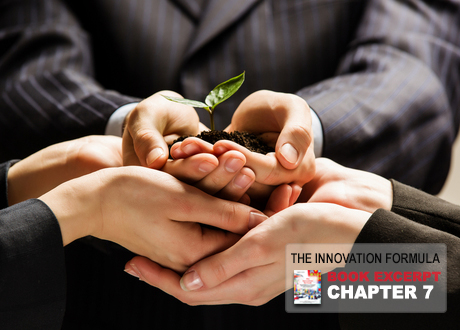25 Steps to Jump-Start your Innovation Journey
We’ve covered some essential ground to help you prepare your innovation journey, and now it’s time to put these concepts into action. The innovation formula addresses the very specific tasks that have to be accomplished for innovation to emerge from your organization not only as a matter of luck or at random, but through a concentrated effort that results in sustained innovation performance. Here you will find the Taking Action steps along with 25 additional suggestions that we hope will help you to think and plan creatively and productively about how to make innovation a reality in your organization.














